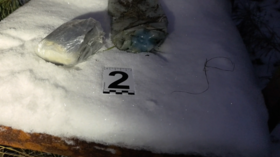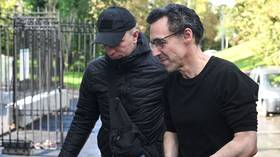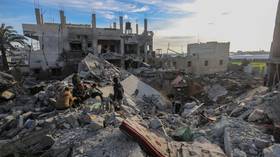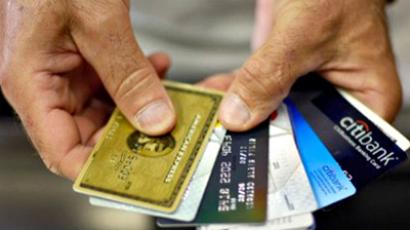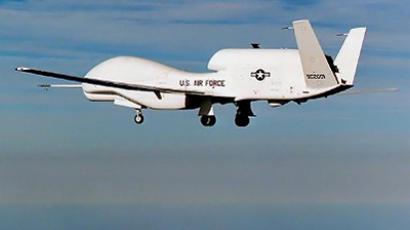NSA Utah ‘Data Center’: Biggest-ever domestic spying lab?

The biggest-ever data complex, to be completed in Utah in 2013, may take American citizens into a completely new reality where their emails, phone calls, online shopping lists and virtually entire lives will be stored and reviewed.
US government agencies are growing less patient with their own country with every month. First, paying with cash, shielding your laptop screen and a whole list of other commonplace habits was proclaimed to be suspicious – and if you see something you are prompted to say something. Then, reports emerged that drones are being fetched for police forces. Now, the state of Utah seems to be making way in a bid to host the largest-ever cyber shield in the history of American intelligence. Or is it a cyber-pool?Utah sprang to media attention when the Camp Williams military base near the town of Bluffdale sprouted a vast, 240-acre construction site. American outlets say that what's hiding under the modest plate of a Utah Data Complex is a prospective intelligence facility ordered by the National Security Agency.
Cyber-security vs. Total awareness
The NSA maintains that the data center, to be completed by September 2013, is a component of the Comprehensive National Cyber-security Initiative. The facility is to provide technical assistance to the Department of Homeland Security, collect intelligence on cyber threats and carry out cyber-security objectives, reported Reuters. But both ordinary Americans and their intelligence community were quick to dub it “a spy center.”
The Utah Data Center will be built on a 240-acre site near Camp Williams, Utah. Once completed in September 2013, it will be twice as large as the US Capitol. The center will provide 100,000 square feet of computer space, out of a total one million square feet. The project, launched in 2010, is to cost the National Security Agency up to $2 billion.
The highly-classified project will be responsible for intercepting, storing and analyzing intelligence data as it zips through both domestic and international networks. The data may come in all forms: private e-mails, cell phone calls, Google searches – even parking lot tickets or shop purchases. “This is more than just a data center,” an official source close to the project told the online magazine Wired.com. The source says the center will actually focus on deciphering the accumulated data, essentially code-breaking. This means not only exposing Facebook activities or Wikipedia requests, but compromising “the invisible” Internet, or the “deepnet.” Legal and business deals, financial transactions, password-protected files and inter-governmental communications will all become vulnerable.Once communication data is stored, a process known as data-mining will begin. Everything a person does – from traveling to buying groceries – is to be displayed on a graph, allowing the NSA to paint a detailed picture of any given individual’s life. With this in mind, the agency now indeed looks to be “the most covert and potentially most intrusive intelligence agency ever,” as Wired.com puts it.William Binney, NSA’s former senior mathematician-gone-whistleblower, holds his thumb and forefinger close together and tells the on-line magazine: “We are that far from a turnkey totalitarian state.”
‘Everybody is a target’
Before the data can be stored it has to be collected. This task is already a matter of the past, as the NSA created a net of secret monitoring rooms in major US telecom facilities – a practice that was exposed by people like William Binney in 2006. The program allowed the monitoring of millions of American phone calls and emails every day. In 2008, the Congress granted almost impecible legal immunity to telecom companies cooperating with the government on national security issues. By this time, the NSA network has long outgrown a single room in the AT&T building in San Francisco, says Binney:“I think there are ten to twenty of them. This is not just San Francisco; they have them in the middle of the country and also on the East Coast.”Binney suspects the new center in Utah will simply collect all the data there is to be collected. Virtually, no one can escape the new surveillance, created in the US for the War on Terror.Some data, of course, would be crucial in the anti-terrorism battle: exposing potential adversaries. The question is how the NSA defines who is and who is not a potential adversary.“Everybody is a target; everybody with communication is a target,” remarks another source close to the Utah project.
Breaking the unbreakable
Now, the last hurdle in the NSA’s path seems to be the Advanced Encryption Standard cipher algorithm, which guards financial transactions, corporate mail, business deals, and diplomatic exchanges globally. It is so effective that the National Security Agency even recommended it for the US government. Here, the Utah data complex may come in handy for two reasons. First: what cannot be broken today can be stored for tomorrow. Second: a system to break the AES should consist of a super-fast computer coupled with a vast storage capabilities to save as many instances for analysis as possible. The data storage in Utah, with its 1 million square feet of enclosed space, is virtually bottomless, given that a terabyte can now be stored on a tiny flash drive. Wired.com argues that the US plan to break the AES is the sole reason behind the construction of the Utah Data Center.The eavesdropping issue has been rocking the US since the Watergate scandal in the 1970s, when domestic spying was eventually outlawed. Nowadays, a lot of questions are still being asked about the secret activities of the US government and whether it could be using the Patriot Act and other national security legislation to justify potentially illegal actions. The NSA’s former employees, who decided to go public, wonder whether the agency – which is to spend up to $2 billion on the heavily fortified facility in Utah – will be able to restrict itself to eavesdropping only on international communications.


